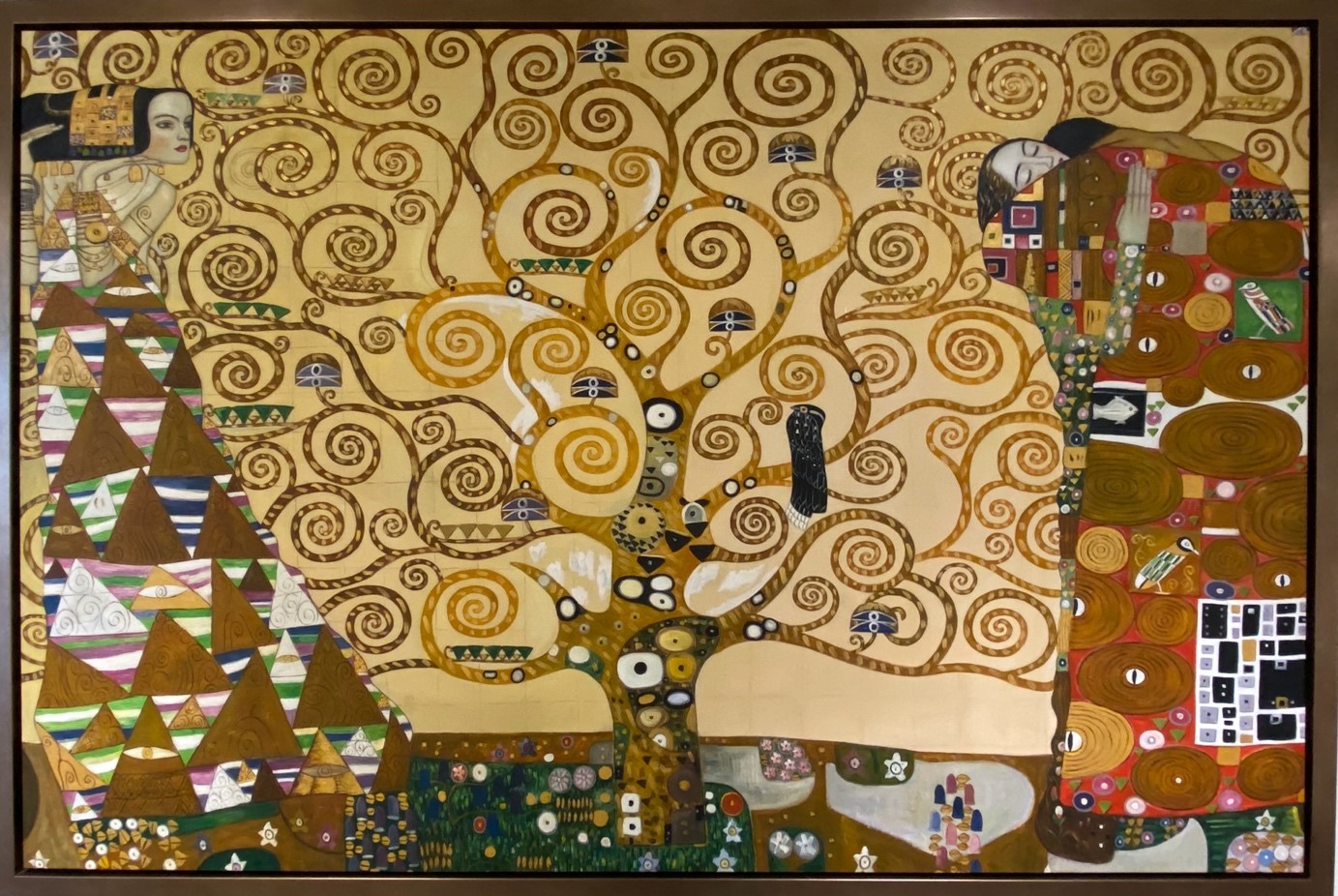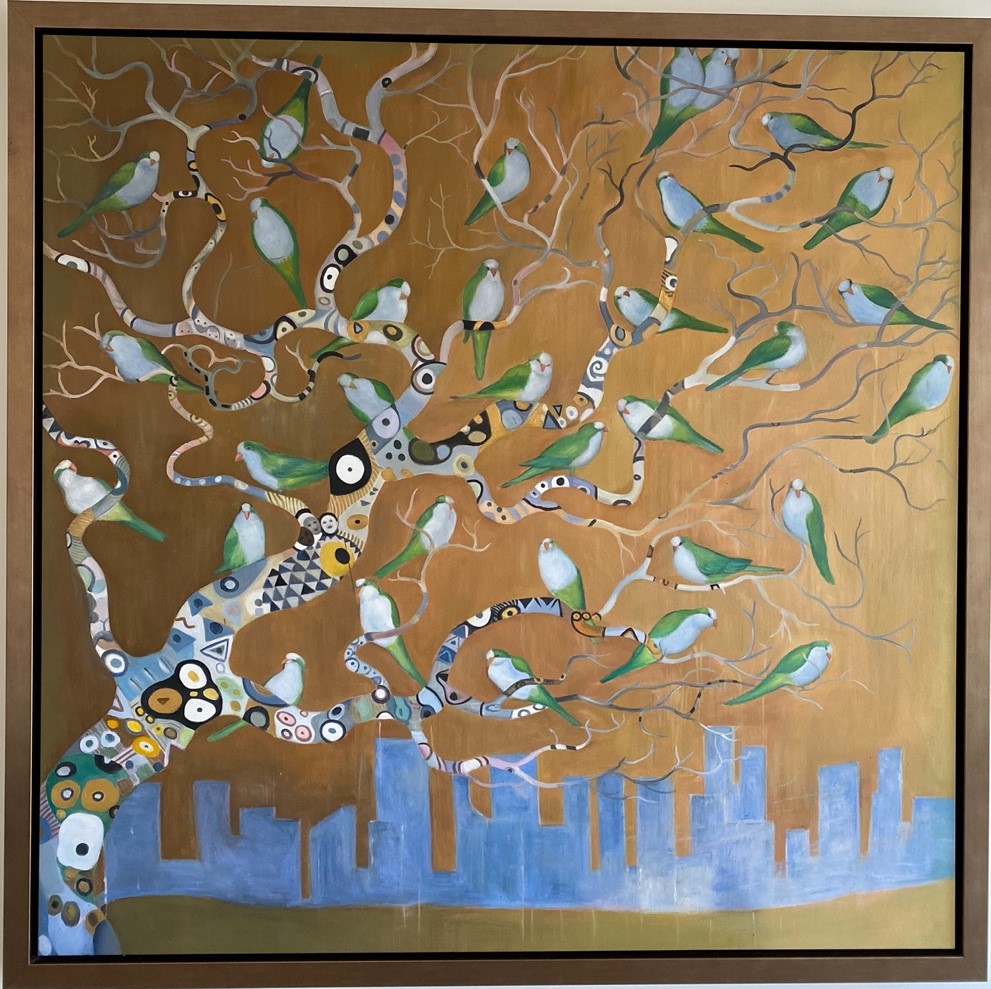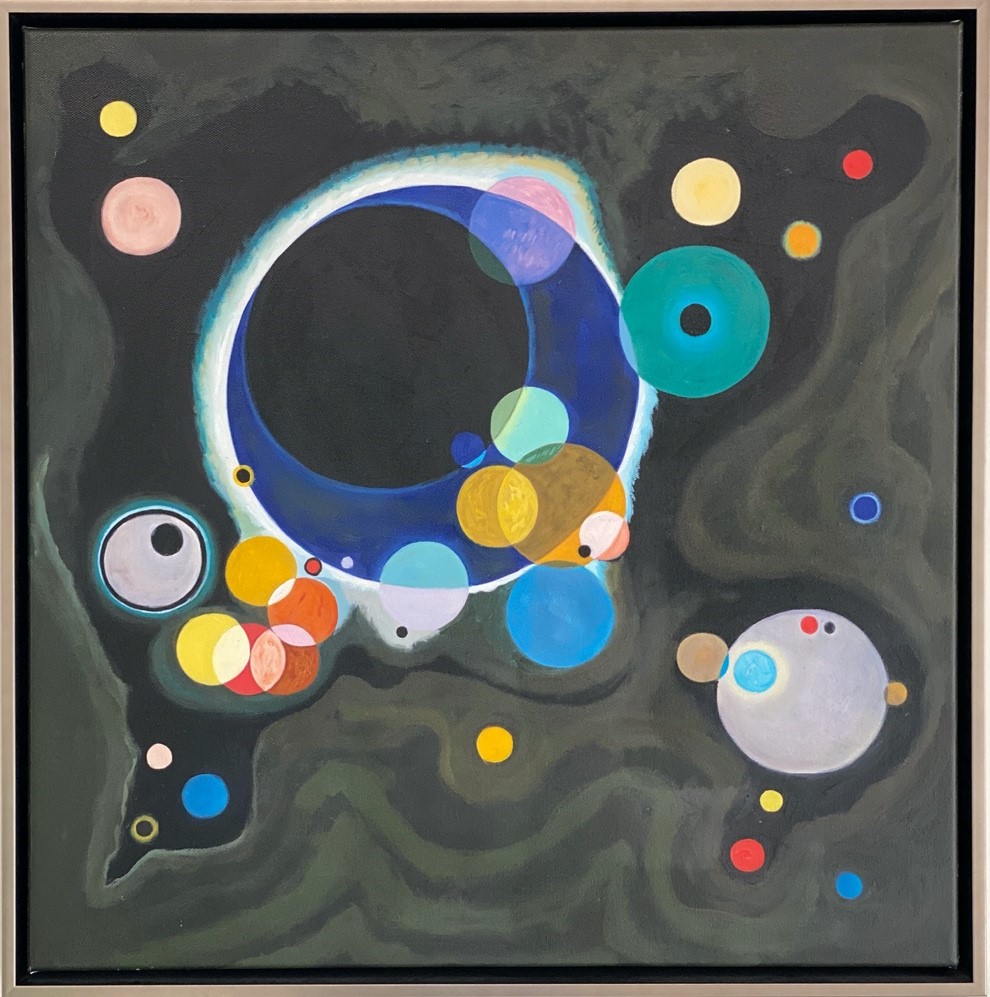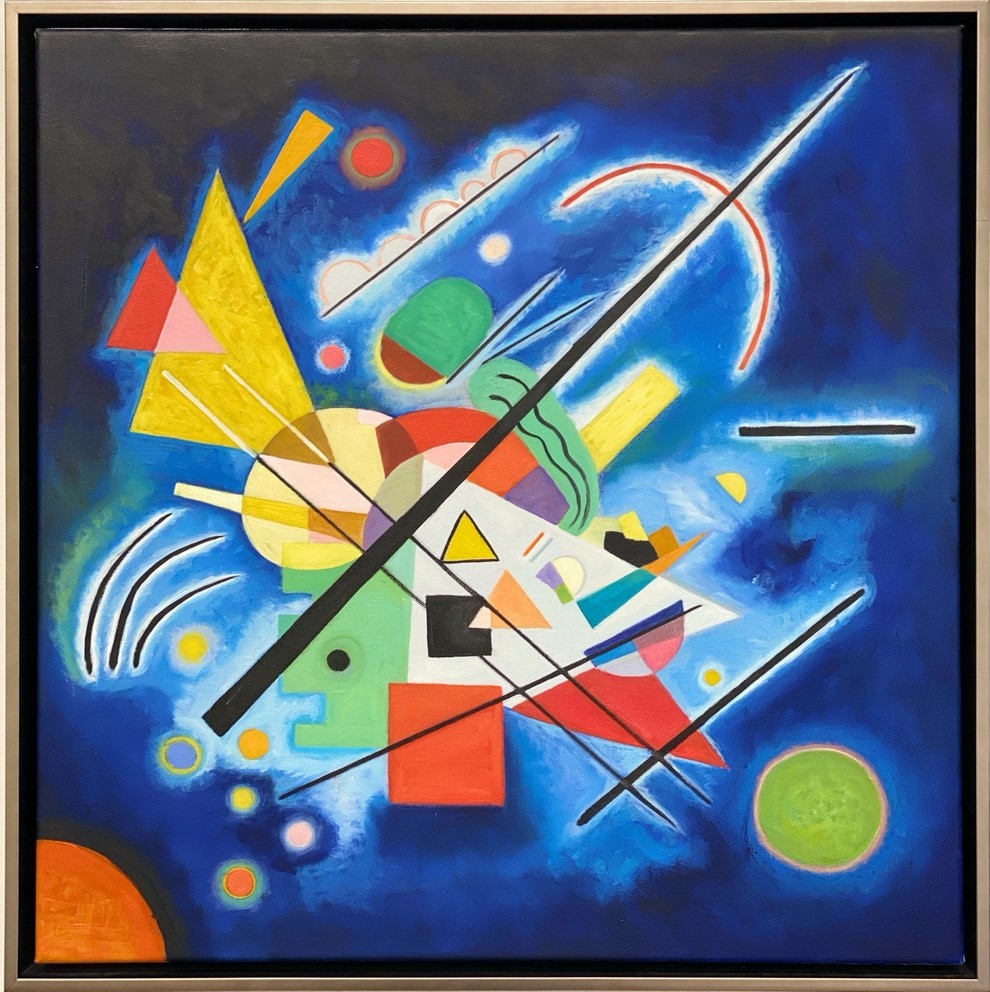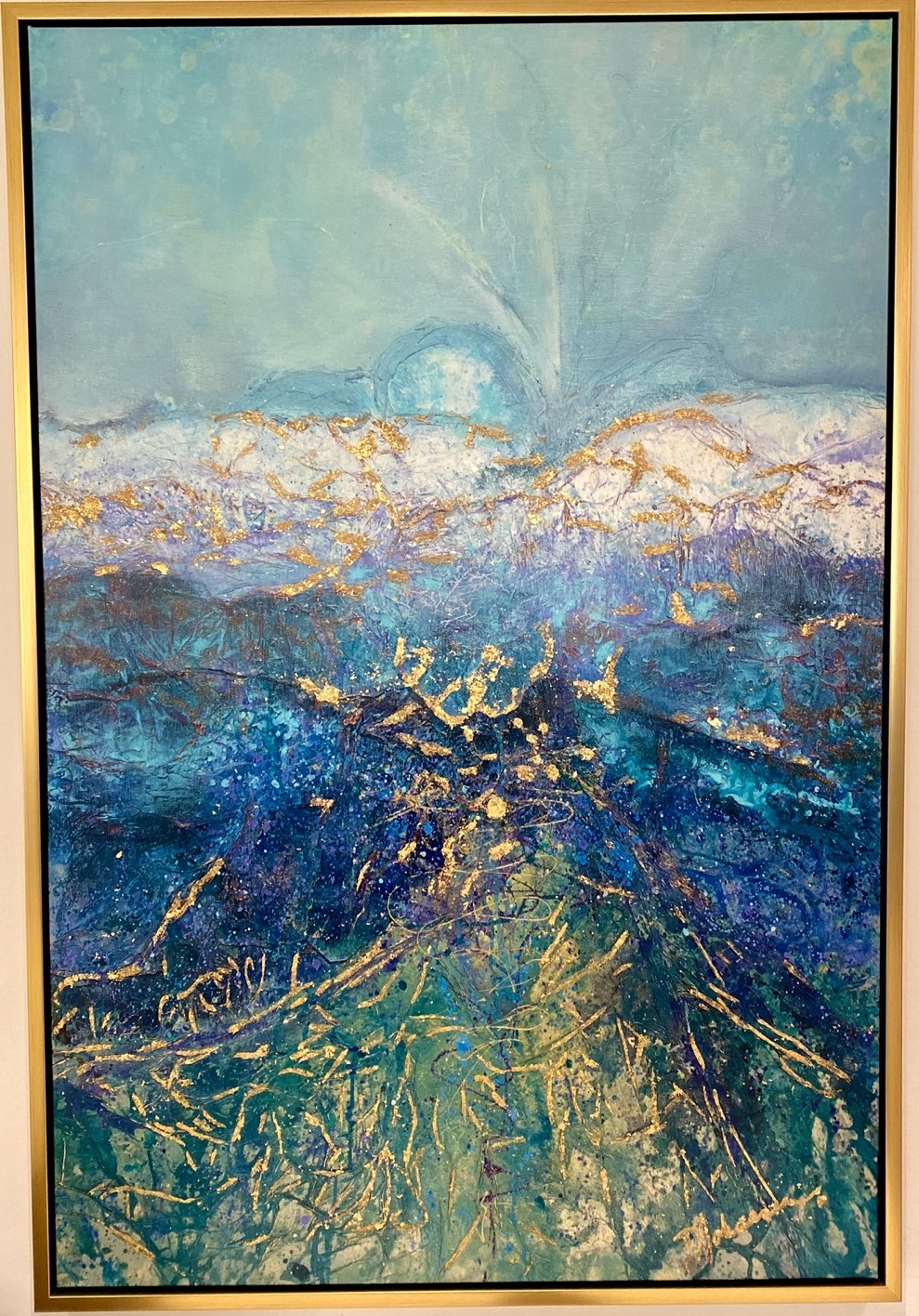Art and Surgery
In 1909, the symbolist painter Gustav Klimt created the Tree of Life. As a series of three mosaics, the work depicts a tree with expansive branches and vines, symbolizing the interconnectivity of the living and complexity of life itself. Strongly rooted in the ground, the tree embodies perpetuity of life, flowing from the earth to the tree and beyond. The caressing human figures and the twirling branches suggest tenderness and yearning, while the central image of a small black bird is a reminder of the inevitability of death. Colors and gold accents underscore the richness of life. In surgery, through each procedure, we are reminded of the elegance of human anatomy and the intricacy of existence. Each successful procedure, no matter how simple or complex, is an opportunity to restore harmony and an occasion to rejoice in the gift of human body – our own tree of life.
Klimt included life related themes even in his landscape paintings. In Tannenwald, which was the first of several works in a series, he depicts an interplay of lifeforms, light, and time through vibrant fir trees reaching in parallel toward the sky.
Many modern artists have been influenced by Klimt and have continued his work. In this anonymous painting, a city skyline is seen in monochrome in the distance with a flock of birds seated up close on abstract-laden branches of a lively tree. The work is a juxtaposition of the natural life and the urban counterpart.
Wassily Kandinsky, was a Russian painter and art theorist, credited with pioneering abstract style of art. His works frequently used geometric shapes with varied colors, eliciting a sense of musical formation, while hinting at a mystical interplay between forces of nature. In Composition VIII, which, as the name implies, was a composed work, and not improvised, a rhythmic ascension of shapes gives rise to a symphonic and structured abstraction, much like seen or heard in a musical composition. While the work is very much methodical, various halos throughout the work are suggestions of metaphysical forces. Surgery shares many elements of Kandinsky’s theory of art. While surgical procedures are interventional compositions with predefined structures arising from principles firmly grounded in empirical evidence, the overall care of the patient must transcend the sum total of the steps within a procedure, necessitating careful attention to patient’s physiologic and emotional needs.
Kandisky continued to use geometric shapes to evoke forces and emotions in many of his works. Several Circles, as he himself described, “is the synthesis of the greatest oppositions. It combines the concentric and the eccentric in a single form and in equilibrium”. In many ways, surgery epitomizes the interplay of oppositions in equilibrium. While surgery is invasive by nature, it is restitutive by principle. While surgical pathology is often progressively debilitating, surgical interventions are definitively alleviative. The field of minimally invasive surgery has contributed greatly to our ability in elevating the equilibrium between these oppositions. When incisions are miniaturized and the approach is non-invasive, healing occurs naturally and effortlessly.
Abe Blair, an artist in Northern California, captures the natural beauty of his surroundings with his medium of photography. Through a process of continued visits to his selected locations, he is able to study the light and weather patterns through the changing seasons and connect with his elements, making great art. This is our tribute to the great state of California.
Just like the interpretation of abstract art is unique for each observer, the experience of surgery is variable for each patient. One person’s speedy recovery may be followed by another person’s protracted one. One person may find pain medications intolerable, while the next will depend on them for day-to-day functioning. It is this individualized interpretation of surgery that makes care of a surgical patient sensitive and rewarding at the same time. We do everything in our power to stay attuned with each patient’s needs and customize treatment plans accordingly.

